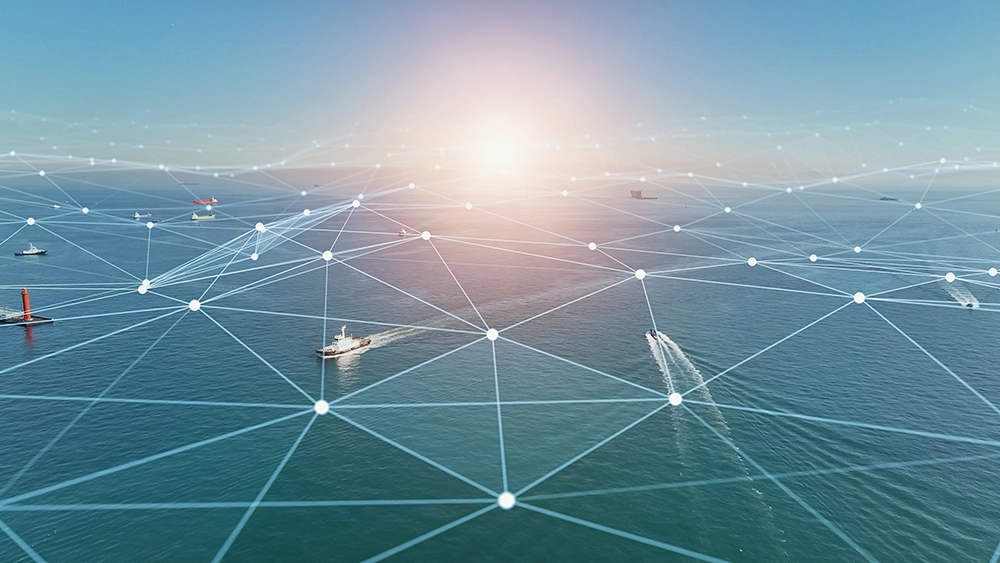Improving Connectivity at Sea: The Impact of High-Speed Internet on Cruises
Introduction
The days of patchy onboard internet and sluggish load times are fading fast. Today’s cruise passengers expect the same digital access at sea that they enjoy on land, whether it’s streaming a movie, uploading vacation photos, or managing a remote work call from their stateroom. The rise of high-speed maritime internet, especially with the rollout of services like Starlink, is transforming the guest experience. For cruise line executives focused on guest satisfaction, loyalty, and operational agility, internet connectivity should be a key infrastructure asset that influences booking decisions, onboard engagement, and brand perception.
From Satellite Blackouts to Starlink Speeds
Historically, cruise ships relied on geostationary satellites that delivered narrow bandwidth and high latency. Connections were inconsistent, expensive, and barely usable for anything beyond checking email. But the introduction of low Earth orbit (LEO) satellite networks, particularly Starlink Maritime, has changed that calculus. With hundreds of satellites orbiting much closer to Earth, LEO networks dramatically reduce latency and expand bandwidth. This upgrade means guests can now stream Netflix, make video calls, or upload large media files without frustration: a shift that’s rewriting expectations for connectivity at sea.
Guest Experience: Streaming, Social Sharing, and Remote Work
The most immediate impact of high-speed internet is on passenger satisfaction. Guests can stream content on their personal devices, share real-time updates with friends, or attend a Zoom meeting from their balcony. For digital nomads and remote workers, this unlocks an entirely new use case: working at sea. Cruise lines like Royal Caribbean, Carnival, and Hurtigruten have already integrated Starlink to boost streaming capability and support more connected experiences. As the line between travel and remote work blurs, fast, reliable Wi-Fi is becoming as fundamental as air conditioning or running water.
Onboard Bookings and App Usage
Connectivity also supports the cruise line’s digital ecosystem. Faster internet means better app performance, enabling smoother booking of shore excursions, spa appointments, and specialty dining. When passengers can navigate these services through an app without lag or load delays, they’re more likely to use them and spend more onboard. Real-time updates and push notifications, powered by improved connectivity, also help reduce missed activities and streamline scheduling.
Crew Benefits and Operational Efficiency
It’s not just guests who benefit from high-speed connectivity. Crew members use internet access to connect with family, manage finances, and complete training modules. For operations teams, high-speed connectivity allows real-time data transfer between ships and headquarters, enabling better forecasting, smarter inventory management, and remote diagnostics. Faster communication also enhances safety protocols and simplifies compliance reporting. These backend benefits, while invisible to guests, improve service delivery and reduce overhead.
Industry Adoption: A Rapid Transition
In just a few years, Starlink has become an industry standard among the major cruise lines. Royal Caribbean was one of the first major lines to adopt Starlink, announcing fleetwide implementation in 2022. Since then, Carnival Corporation, Hurtigruten, American Cruise Lines, and others have followed suit. Starlink has become a key partner in modernizing connectivity across fleets. Passengers now ask not if there’s Wi-Fi onboard, but how fast it is—and what it costs.
The Business Case for Better Connectivity
Investing in improved connectivity has both direct and indirect returns. Higher satisfaction scores, stronger social media engagement, and expanded remote work-friendly marketing all drive bookings. Guests who can stay connected are more likely to extend their trip or choose a cruise over a land-based resort. Improved onboard spending through app-driven bookings and real-time promotion adds another revenue stream. For executives weighing capital expenditures, connectivity now sits firmly in the category of guest-facing infrastructure, right alongside HVAC and sanitation.
Quick Takeaways
- Starlink and LEO satellites are redefining what’s possible for internet at sea
- High-speed internet enables streaming, video calls, and remote work
- Better app performance drives more onboard bookings and engagement
- Crew, safety, and operations benefit from faster data and communication
- High-speed Wi-Fi is now a baseline expectation, not a premium perk
Conclusion
Connectivity is no longer a bonus feature aboard modern cruise ships. It’s a utility that touches nearly every aspect of the guest journey and internal operations. As LEO satellite technology continues to improve, the gap between land and sea access will narrow even further. For cruise executives, investing in connectivity isn’t about keeping up. It’s about staying relevant to a new generation of digitally fluent travelers. High-speed internet doesn’t just support the cruise experience. Increasingly, it defines it.
If you’re looking for a technology partner to help integrate high-speed internet into your cruise operations, OnDeck is here to help. We’re experts in all things cruise technology—especially when it comes to complex onboard integrations. Our products are built to be flexible and modular, making them ideal for evolving connectivity needs across fleets. Whether you’re optimizing guest Wi-Fi, enabling new app features, or modernizing your onboard tech stack, we can help you do it faster, smarter, and without the guesswork. Contact us to start a conversation—we’d love to learn more about your goals and explore ways we can work together.
FAQs
Q: What is Starlink, and how is it different from traditional satellite internet? Starlink is a low Earth orbit (LEO) satellite internet system by SpaceX. Unlike geostationary satellites, it offers lower latency and higher speeds ideal for mobile environments like cruise ships.
Q: Which cruise lines have adopted Starlink? Royal Caribbean, Carnival Corporation, Hurtigruten, and American Cruise Lines are among the first to integrate Starlink across their fleets.
Q: Can guests stream Netflix or work remotely using cruise Wi-Fi now? Yes. With Starlink or comparable high-speed systems, guests can reliably stream, video chat, and work online during their voyage.
Q: Does better internet impact crew operations too? Absolutely. Improved connectivity supports training, personal communications, logistics, and safety operations.
Q: Is Wi-Fi still an upsell or now included in cruise pricing? It depends on the cruise line. Some include basic packages, while others offer tiered pricing. However, guest expectations now lean heavily toward fast, included service.

